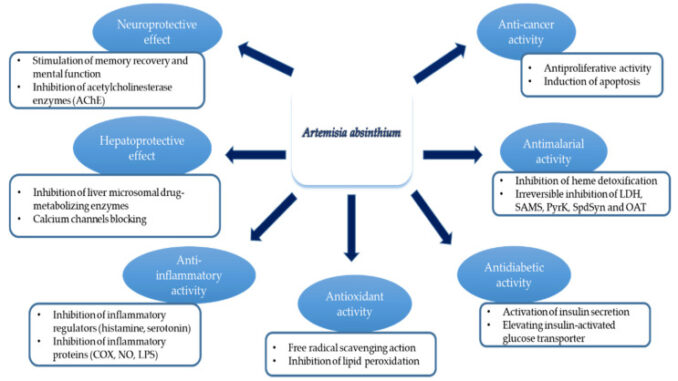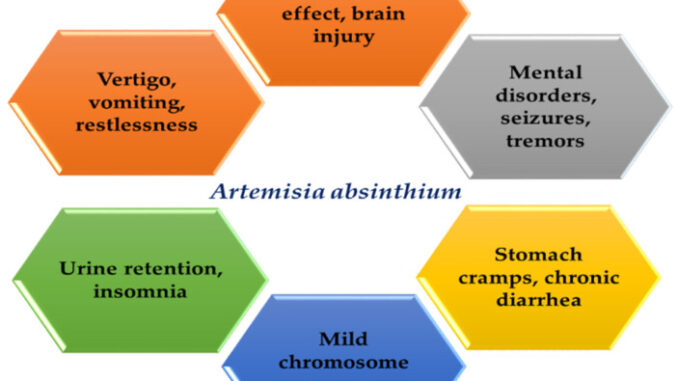Batiha Gaber El-Saber, et al.
Antibiotics, 2020
Abstract
Plants have been used since ancient times to cure certain infectious diseases, and some of them are now standard treatments for several diseases. Due to the side effects and resistance of pathogenic microorganisms to antibiotics and most drugs on the market, a great deal of attention has been paid to extracts and biologically active compounds isolated from plant species used in herbal medicine. Artemisia absinthium is an important perennial shrubby plant that has been widely used for the treatment of several ailments. Traditionally, A. absinthium has always been of pharmaceutical and botanical importance and used to manage several disorders including hepatocyte enlargement, hepatitis, gastritis, jaundice, wound healing, splenomegaly, dyspepsia, indigestion, flatulence, gastric pain, anemia, and anorexia. It has also been documented to possess antioxidant, antifungal, antimicrobial, anthelmintic, anti-ulcer, anticarcinogenic, hepatoprotective, neuroprotective, antidepressant, analgesic, immunomodulatory, and cytotoxic activity. Long-term use of A. absinthium essential oil may cause toxic and mental disorders in humans with clinical manifestations including convulsions, sleeplessness, and hallucinations. Combination chemotherapies of artemisia extract or its isolated active constituents with the currently available antibabesial or anti-malarial drugs are now documented to relieve malaria and piroplasmosis infections. The current review examines the phytoconstituents, toxic and biological activities of A. absinthium.
Keywords
Artemisia absinthium; Traditional uses; biological activities; medicinal herb; phytochemical compounds.
Conflict of interest statement
The authors declare no conflict of interest.Figures

Schematic representation of different pharmacological activities of A. absinthium and their mechanisms.

Schematic representation of different side effects of A. absinthium and its related compounds.
| PMID: | 32585887 |
|---|---|
| PMCID (Free PMC Article): | PMC7345338 |
| DOI: | 10.3390/antibiotics9060353 |
Previous article
Thymol, thyme, and other plant sources: Health and potential uses.

























































